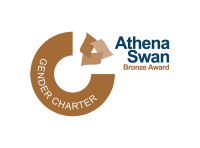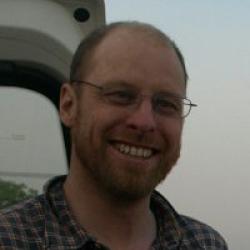
Principal Investigator

Cameron A. Petrie, University of Cambridge

I am the PI for the TwoRains project, and am co-ordinating its overarching strategy and implementation. In collaboration with Prof. R.N. Singh, I am leading the field component of the project, and am also responsible for co-ordinating the execution of the analysis required for each of the workpackages in Cambridge. I have co-directed excavations at Masudpur I and VII, Burj, Dabli vas Chugta, Bahola, and Lohari Ragho II jointly with Ravindra Nath Singh as part of the Land, Water and Settlement project. I have also co-directed fieldwork in Iran and Pakistan.
Co-Investigator

Ravindra Nath Singh, Banares Hindu University

I am Professor in Archaeology, Department of AIHC & Archaeology, Banaras Hindu University, Varanasi, India. As co-Investigator on the TwoRains project I will be involved in most of the field research in India including excavations at Lohari Ragho II and Masudpur I. I have directed several field projects in India, including six sites jointly with Cameron Petrie as part of the Land, Water and Settlement project. I also have a more general interest in archaeological science, and the history of science and technology, particularly archaeometallurgy, glass technology and climatic studies.
Research Administrator
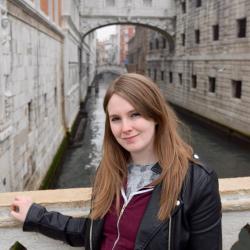
Charlotte Thompson-Mitchell, University of Cambridge

I am the part time administrator for the TwoRains project.
Team

Andreas Angourakis, University of Cambridge

My research has focused on the development of simulation models of socio-ecological dynamics in the past, mainly using agent-based modeling, and assembling multivariate statistical protocols for analysing and interpreting archaeological data. In TwoRains, my research focuses on synthesising the wide variety of data generated by the project and creating agent-based models that reflect and can interact with the team's knowledge and hypotheses. I am interested in exploring how human societies adapted and thrived in the variable landscape of NW India, before and after the main climatic shift affecting the Indus Civilisation.
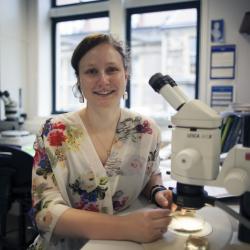
Jennifer Bates, University of Pennsylvania

My research uses archaeobotanical data to explore questions about the broader social, cultural and environmental contexts of how societies were internally organised, how villages and cities interacted during periods of urbanisation and deurbanisation, what happens when cultures meet and interact, and how people reacted during periods of climatic instability. I am a Postdoctoral Fellow at the Department of Anthropology, University of Pennsylvania, working on the LandCover6k project, the archaeobotanical remains from Kadebakele and other Southern India Neolithic – Early Historic sites as well as working with the TwoRains project on materials from the Indus Civilisation c.3200-1300BC.

Jean-Philippe Baudouin, University of Heidelberg
I did my PhD with TwoRains, investigating the pattern and variability of precipitation in the Indus Basin. My aim was to determine whether climate simulations could help archaeologists to understand past precipitation, i.e. whether climate models have a realistic representation of precipitation and the driver of its variability. I mostly focused on the analysis of winter precipitation in the Upper Indus, its daily to inter-annual variability, and its relationship to Western Disturbances. I am now a PostDoc for the project PalMod, which aims at modelling an entire glacial cycle, since 120.000 years ago.

Alessandro Ceccarelli, University of Cambridge

I am a Research Associate for the TwoRains project. My research in South Asia aims to rediscover ancient technologies, teaching and learning behaviours, and mechanisms of resilience in the face of urban ‘collapse’ and climate change in the third millennium BC. I completed a PhD in Archaeology at the University of Cambridge (2019/20), as part of the TwoRains project. I was also supported by the Nehru Trust, V&A Museum, London, and by the Fitch Awards, British School at Athens, Greece. My project re-discovered ancient ceramic technologies and traditions of the Indus Civilisation (c. 2500-1900 BCE) in North-Western India, using a holistic approach. This includes (a) the use of multi-site materials for regional studies and clarifications on ancient landscapes; (b) identification of production sites or provenance of materials; (c) an interdisciplinary cooperation between experts, e.g. archaeologists and geologists; and (d) the integration of combined archaeometric techniques, such as petrography and geochemistry, along with experimental archaeology and archaeological ethnography.

Francesc Conesa, Institut Català d'Arqueologia Clàssica, Landscape Archaeology Research Group (GIAP)

I am a research fellow at the Landscape Archaeology Research Group, Catalan Institute of Classical Archaeology. My research centres on developing new multi-source remote sensing procedures, coupled with machine learning and deep learning methods that can help and eventually improve the detection, identification, mapping and quantification of features of archaeological interest. My broad interests focus on the natural and anthropic relationships that define Cultural Landscapes, including long-term ecological footprint, past land use and present-day endangered cultural heritage. I have conducted research and field explorations in a diverse range of archaeological contexts and ecological settings such as South Asia, the Mediterranean region, north-Africa and the Sahara, Central Asia and, more recently, Mongolia.

Arnau Garcia, Institut Català d'Arqueologia Clàssica, Landscape Archaeology Research Group (GIAP)

My research focuses on the study of present landscapes as the result of long-term human-environment interactions and, consequently, part of our cultural heritage. As a landscape archaeologist, I work with archaeological, historical and geospatial data in the context of multidisciplinary studies directed to understand how human societies have inhabited and conceptualized their environment through time.
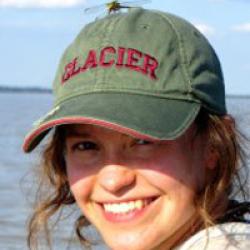
Alena Giesche, Denali National Park, Alaska

My research consists of a detailed examination of the palaeoclimatic shifts that coincided with societal changes during and after the Mature Harappan urban phase. I am using proxies from a broad latitudinal gradient to investigate the timing and extent of the weakening of the Indian Summer Monsoon during the decline of the Indus civilization. My research is based on geochemical analysis of marine foraminifera in the Arabian Sea, palaeolake sediments close to populous Indus centers, as well as speleothems in Himalayan caves.

Adam Green, University of Cambridge

I am combining archaeological fieldwork with previous archaeological studies to address critical questions about landscapes and technologies in the Indus civilization. In the field, I am systematically collecting new data using digital tools to record site location, morphology and other attributes with extremely high precision. In the lab, I am assembling comprehensive new databases that allow us to test old assumptions about Indus settlements and compare studies that used different methods to answer different questions.
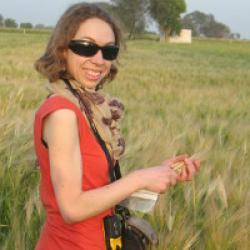
Penny Jones, University of Tasmania

My PhD research used isotopic techniques to investigate climate change and how it affected Indus agriculture, focusing on eight sites across Haryana, Rajasthan and Pakistan and supported by the Rae and Edith Bennett Traveling Scholarship. I brought a new perspective to questions about climate and Indus society by taking a mechanistic, rather than correlative approach. I remain deeply interested in questions about climate change, adaptation and food security in the past, but have taken up a position at the Menzies Institute for Medical Research, researching the impacts of pollen, smoke and extreme temperatures on human health.
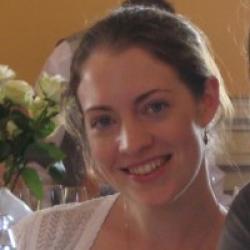
Emma Lightfoot, University of Cambridge

My research uses stable isotope analysis (C, N, O, Sr). For TwoRains I am using animal teeth from our excavations to document changes in seasonal and annual precipitation, providing intra-annual climatic data that are directly related to the archaeological record. I am also using isotopic analysis of plant and animal remains to ask how or if subsistence strategies changed within and between sites, and through time, and to ask whether or not climate change caused water stress.

Sayantani Neogi, Durham University

My PhD research for the Land, Water and Settlement project used pedology to investigate the evolution of the landscape as a product of both environmental and cultural factors. Specifically, I investigated the nature of on-site household occupation, agricultural systems, associated soils and their sustainability in the Indus period in northwest India. Previously on the ERC Starting Grant project ‘AcrossBorders’, I am currently a researcher on the EAMENA project at Durham University.
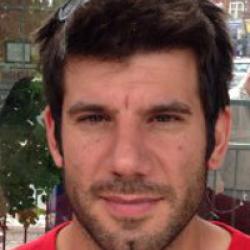
Hector Orengo, Institut Català d'Arqueologia Clàssica, Landscape Archaeology Research Group (GIAP)
I am applying satellite remote sensing techniques and GIS-based topographic analysis to detect ancient cultural features and to reconstruct the palaeohydrographical network of Indian Punjab and Haryana. My work combines large-scale multi-temporal, multi-sensor datasets and high-resolution digital terrain models in order to overcome the effects of seasonal variability, changing cultivation patterns and large-scale landscape modifications. I am currently a Ramón y Cajal Researcher at the Catalan Institute of Classical Archaeology.
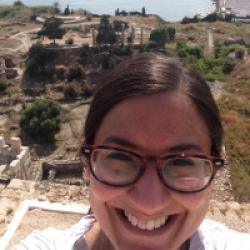
Danika Parikh, University of Cambridge

My PhD focuses on technology, the materialisation of social boundaries and ideology, and the role of material culture in negotiating and communicating identity. I am studying the ceramics from rural Indus settlements in northwest India to examine how they changed over time and across space, and how their production and distribution were affected by the development and expansion of urban settlements in the region. I am interested in the socioeconomic links between these urban and rural settlements, and the relationship between ceramic decorative motifs, rural identity and regionalism.

Akshyeta Suryanarayan, CEPAM (Cultures et Environnements, Préhistoire, Antiquité, Moyen Âge), UMR7264-CNRS, Université Nice Côte d'Azur

My research focuses on the study of organic remains and foodstuff in pottery using lipid residue analysis. My PhD was focused on the nature and variation of food and vessel-usage practices at villages, towns, and cities of the Indus Civilisation in northwest India during the urban and post-urban period, and the extent to which they changed in the face of climate change. I am currently a Fyssen Foundation postdoc in Nice, investigating lipid residues in pottery from Bronze Age sites in the Arabian Peninsula.

M Cemre Ustunkaya, University of Cambridge
I am an archaeobotanist specialising in the analysis of charred plant macro fossils and stable isotope analysis of plant materials. Archaeobotanical remains from the TwoRains excavations will be used to understand how agricultural practices were shaped by stressful environmental conditions. Morphological analysis of crop grains will be utilised to investigate if there is a decrease in overall crop yield. I am also interested in whether there was state control over agriculture and, if so, how this affected agricultural management on a smaller scale.

Joanna Walker, University of Cambridge

My research focuses on reconstructing past environments. I am currently using geoarchaeological methods as part of the TwoRains Project to identify changes in the palaeolandscape surrounding Indus settlement sites in northwest India. I am trying to look beyond the coincidence of climate change and the onset of Indus decline to understand how humans have responded to variable rainfall and hydrological regimes. As part of this I am analysing sediment from both within and around settlements, looking at changes in lithology and soil micromorphology through time.

Nathan Wright, University of Cambridge
I am an archaeobotanist specialising in the analysis of charred and water logged wood remains (anthracology) for the purpose of analysing past climate, woodland resource use, and landscape modification. Beyond food and water, wood may well be the most important resource for human survival and this has enormous implications on security and subsistence in the past, present, and future. Due to this importance of wood as a fuel and construction resource, I analyse wood supply and the impacts of human activity and climate change on that supply through the application of dendroecological and dendrochronological techniques.
Collaborators
Prof. C A I French, University of Cambridge (Geoarchaeology)
Dr M Herzog, University of Cambridge (Climate modelling)
Prof. D Hodell, University of Cambridge (Palaeoclimate)
Dr T C O'Connell, University of Cambridge (Isotopes, Palaeoclimate)
Dr M Altaweel, University College London (Agent-based modelling)
Dr M Bithell, University of Cambridge (Agent-based modelling)
Prof. M Madella, University Pompeu Fabra (Archaeobotany)
Prof. P Joglekar, Deccan College (Bioarchaeology)
Dr B Menze, Technische Universität München (Remote sensing, GIS)
Dr V Pawar, MD University (Archaeology)
Mr D I Redhouse, University of Cambridge (GIS, Archaeology)

